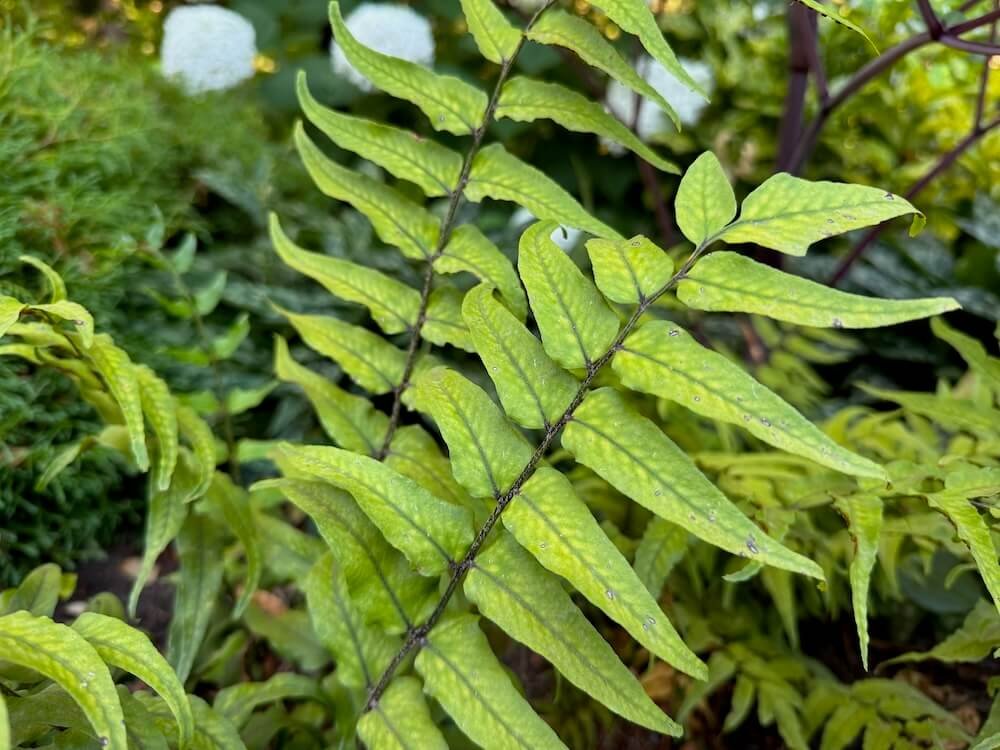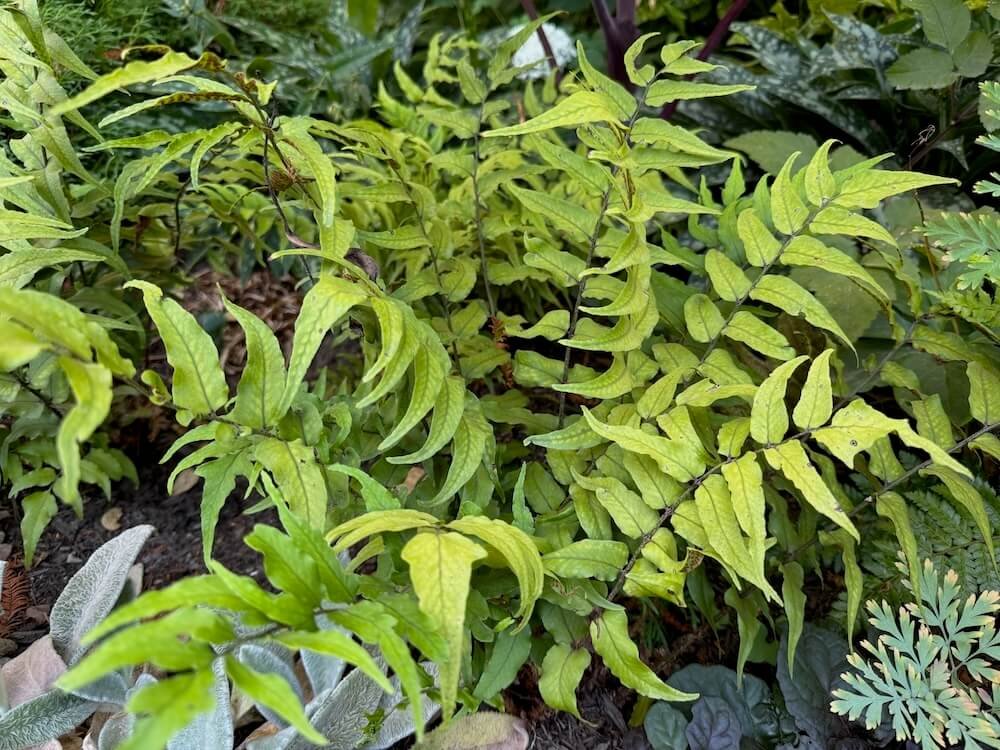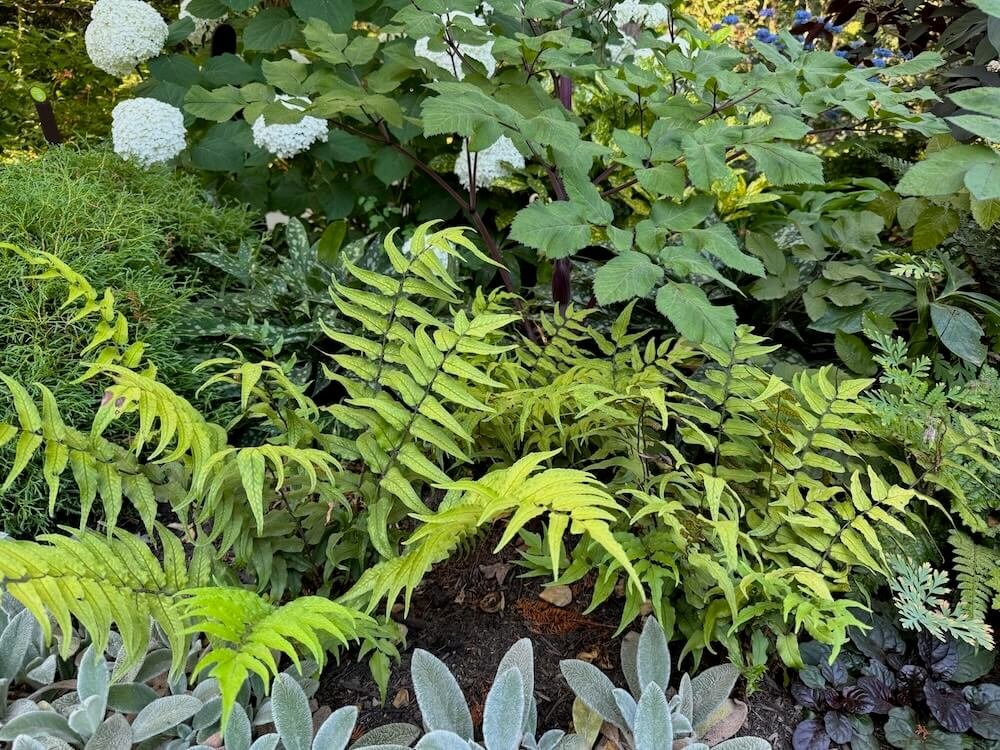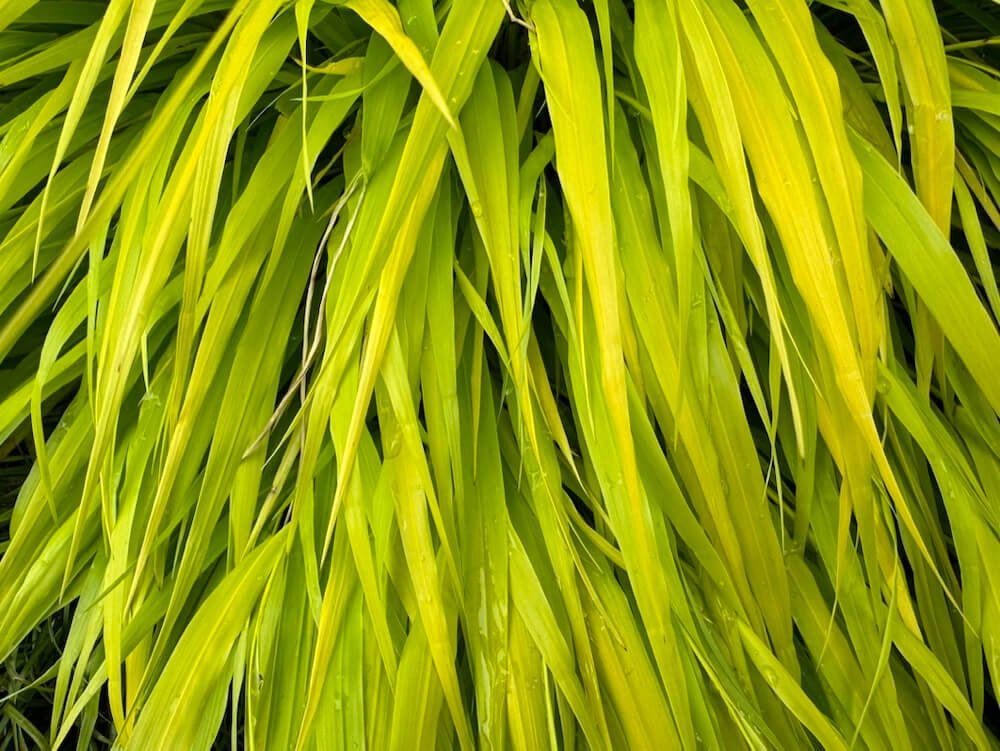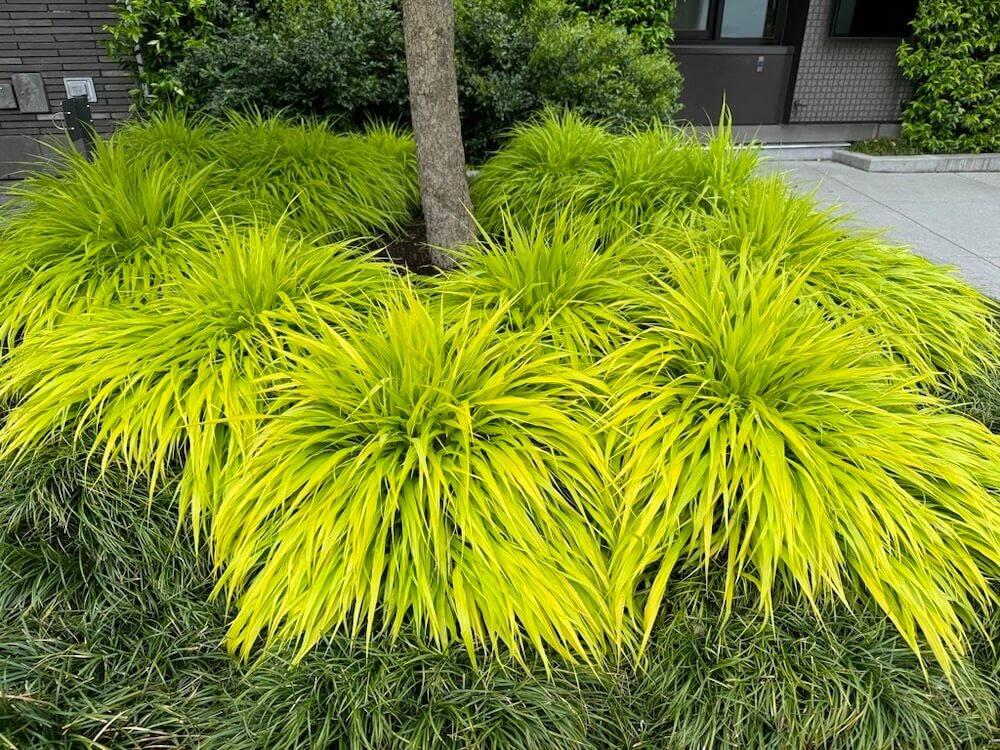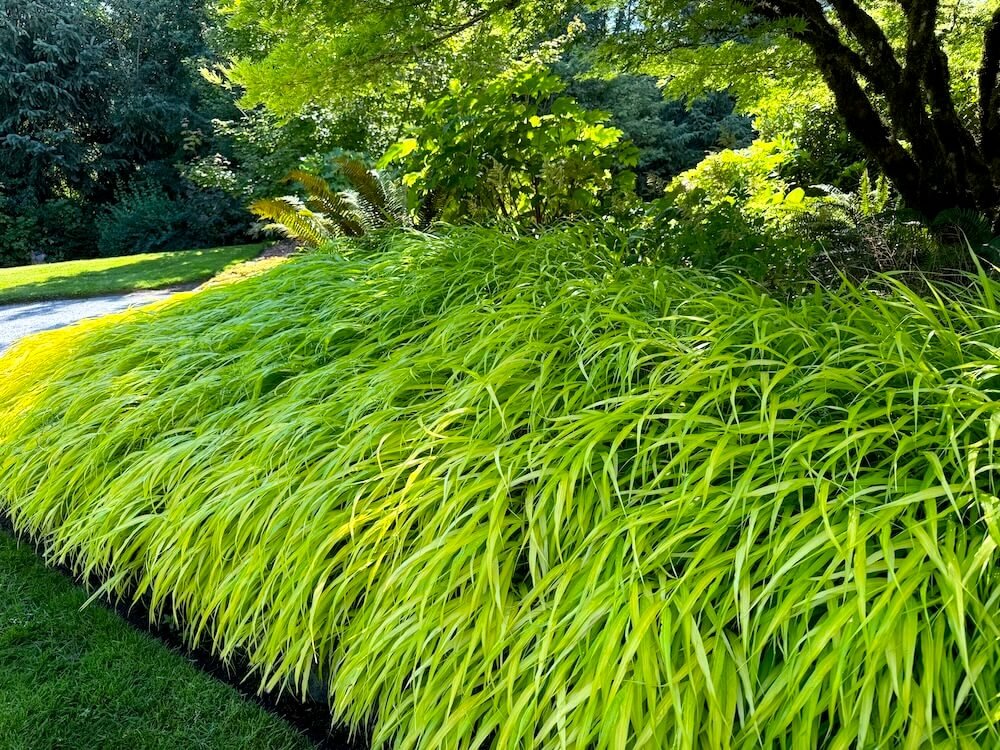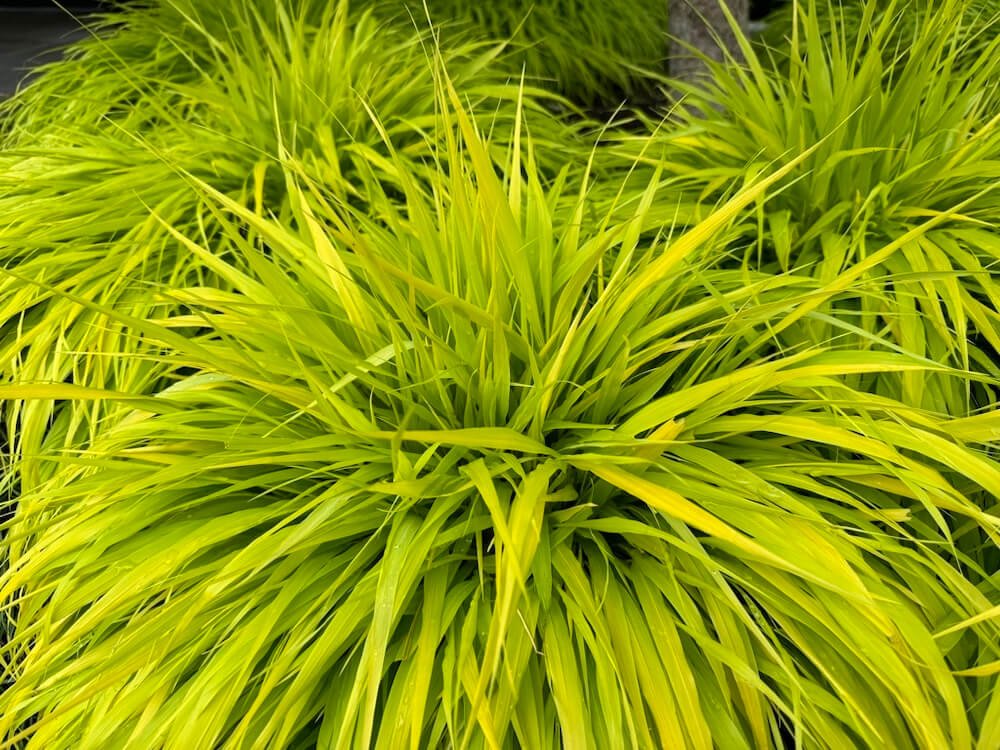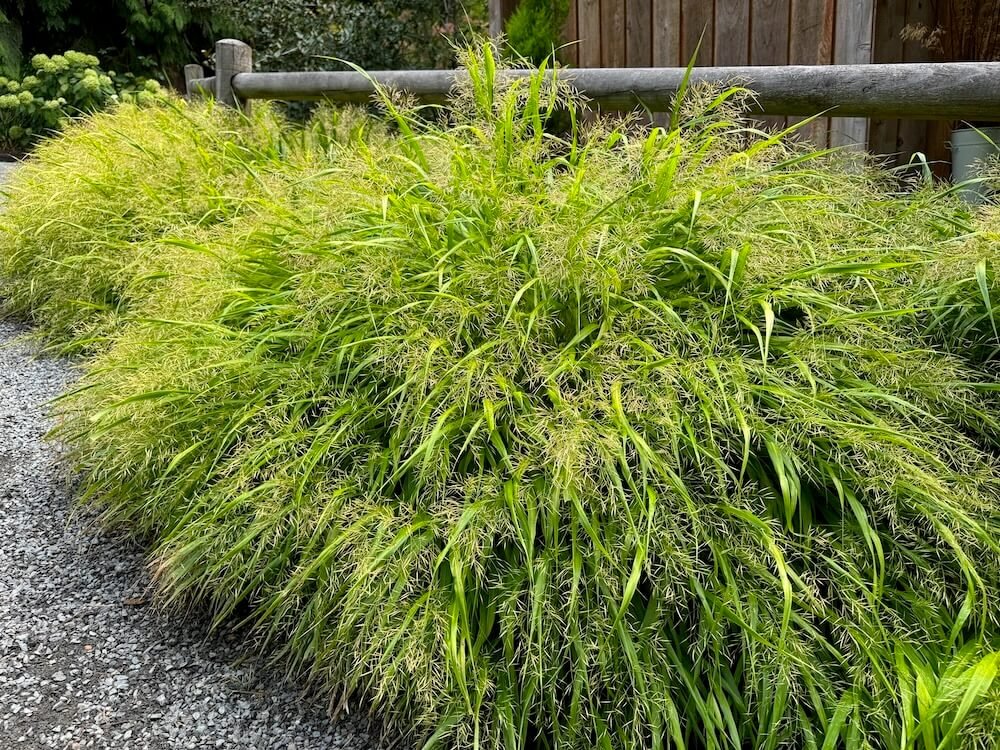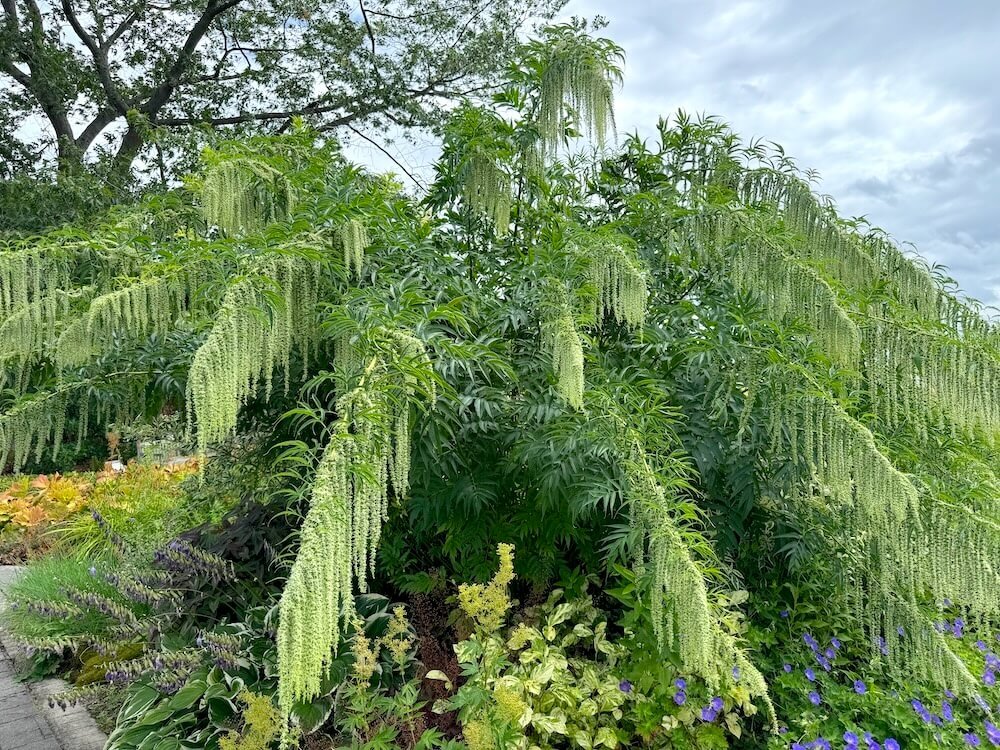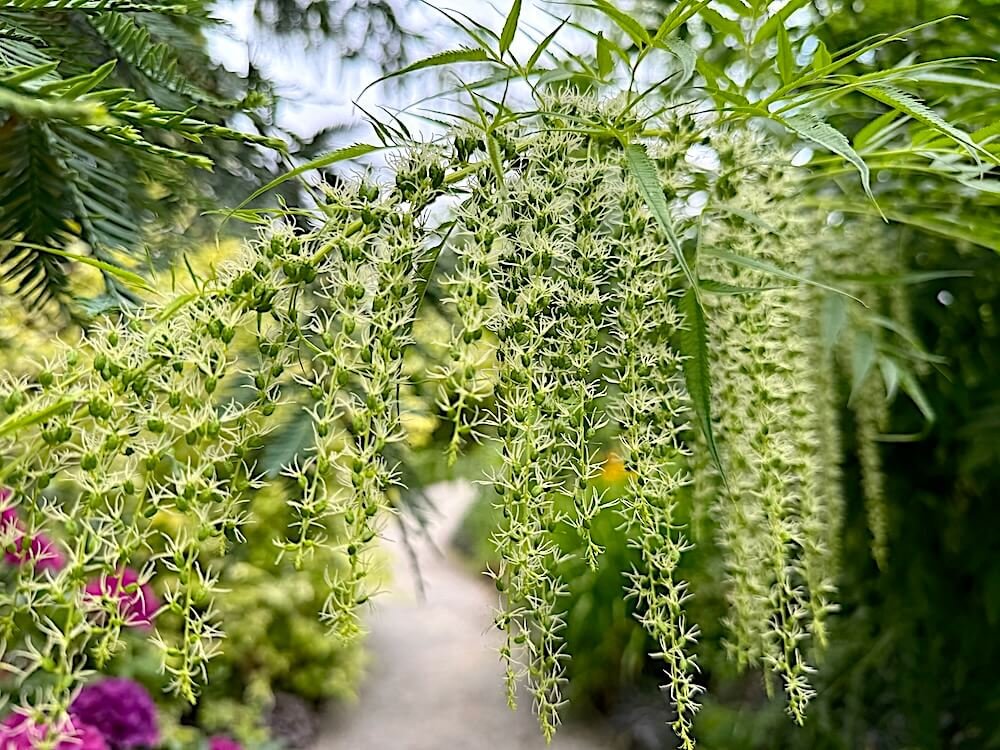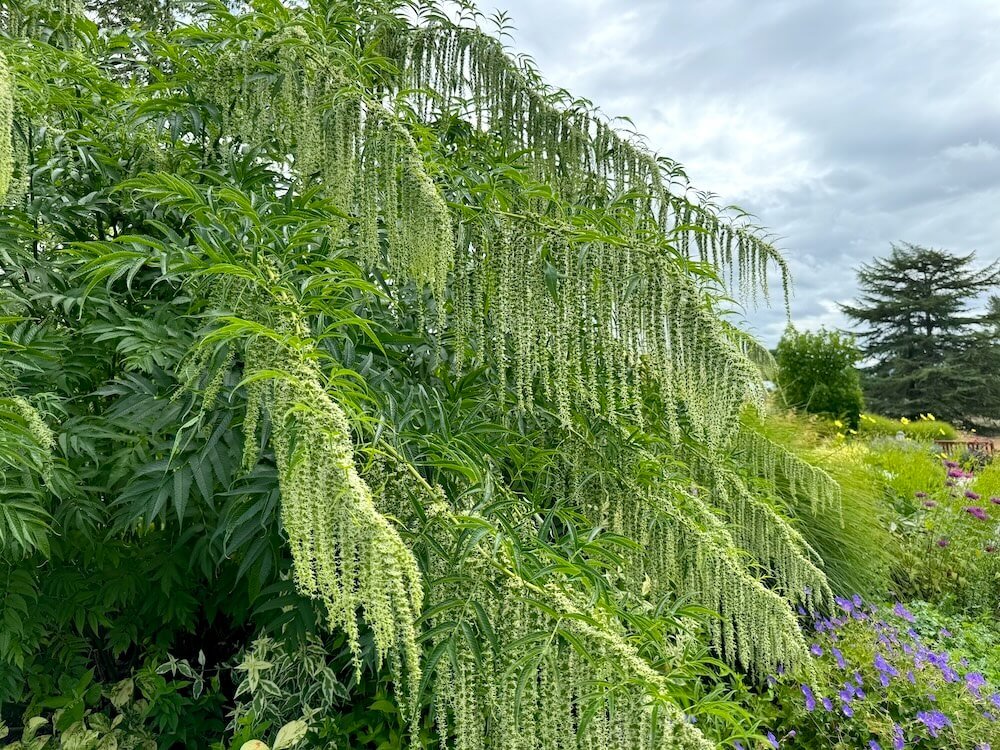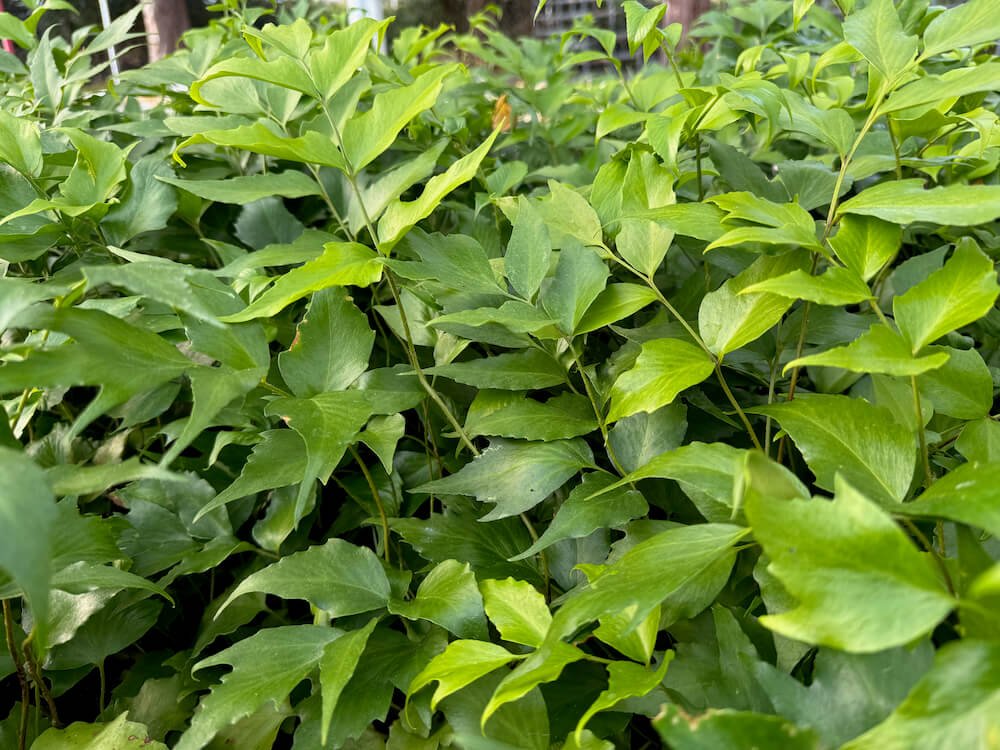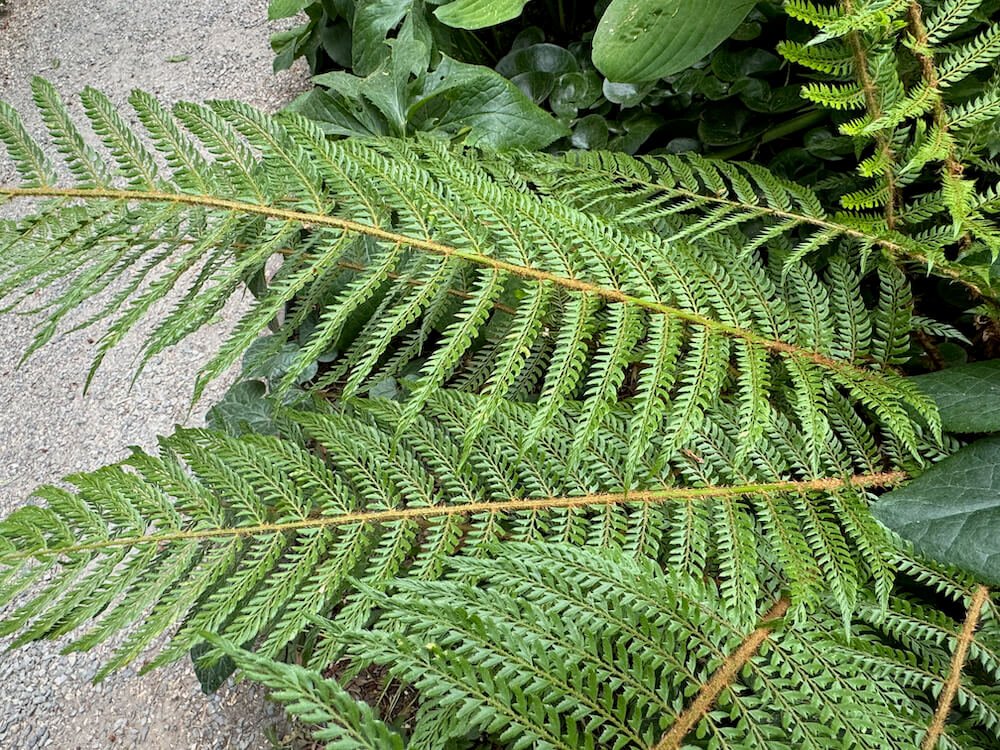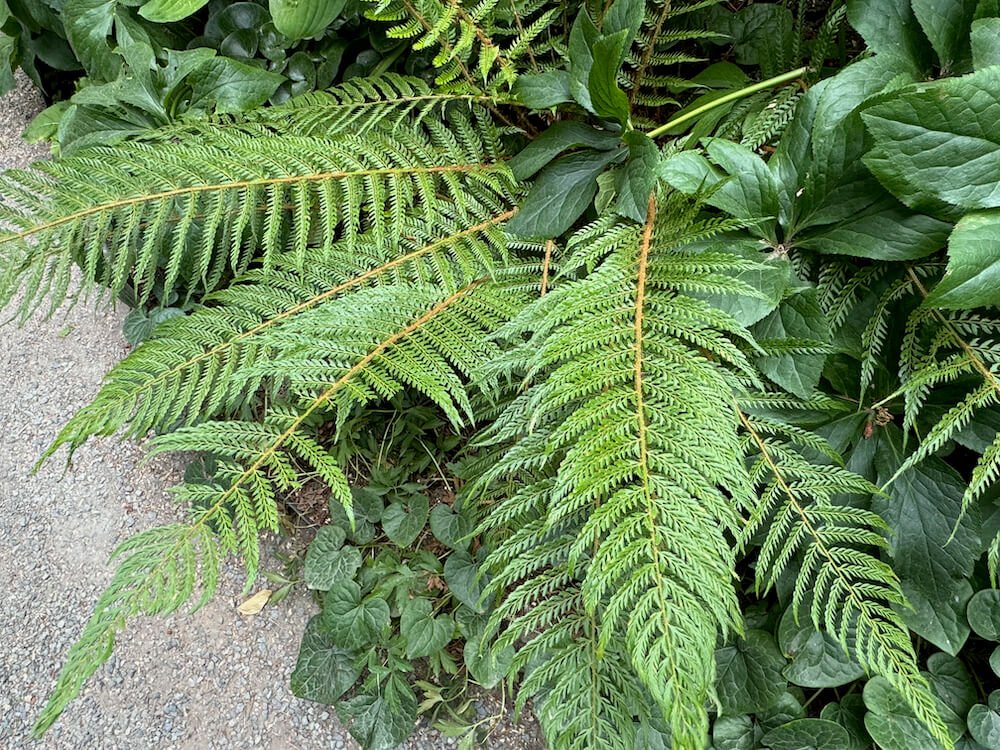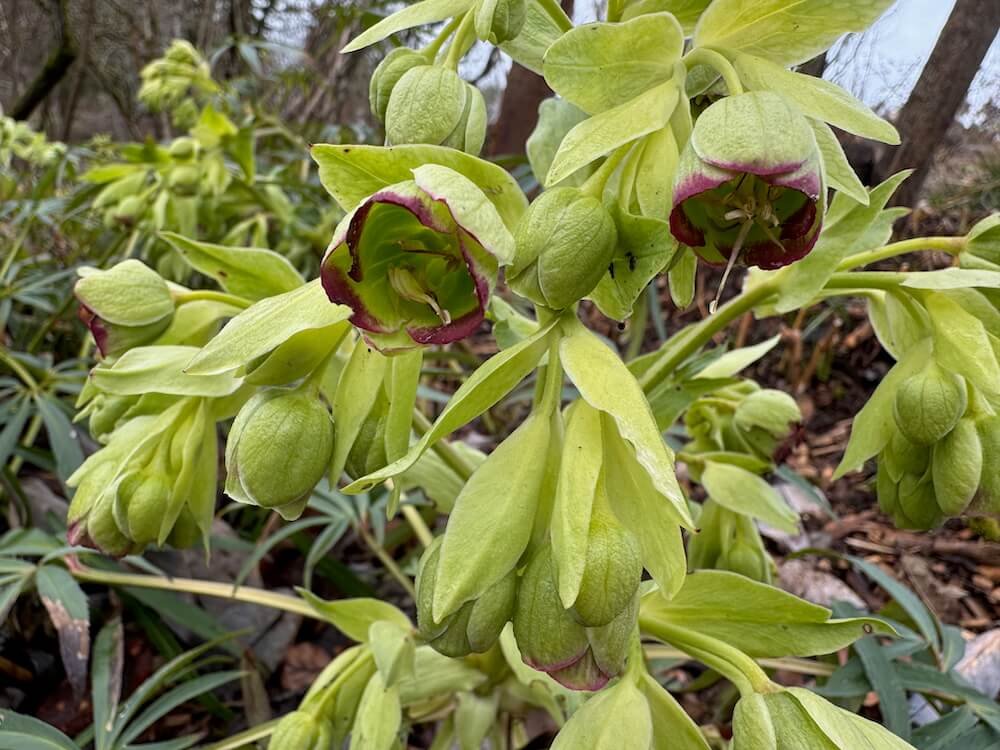 Image 1 of 5
Image 1 of 5

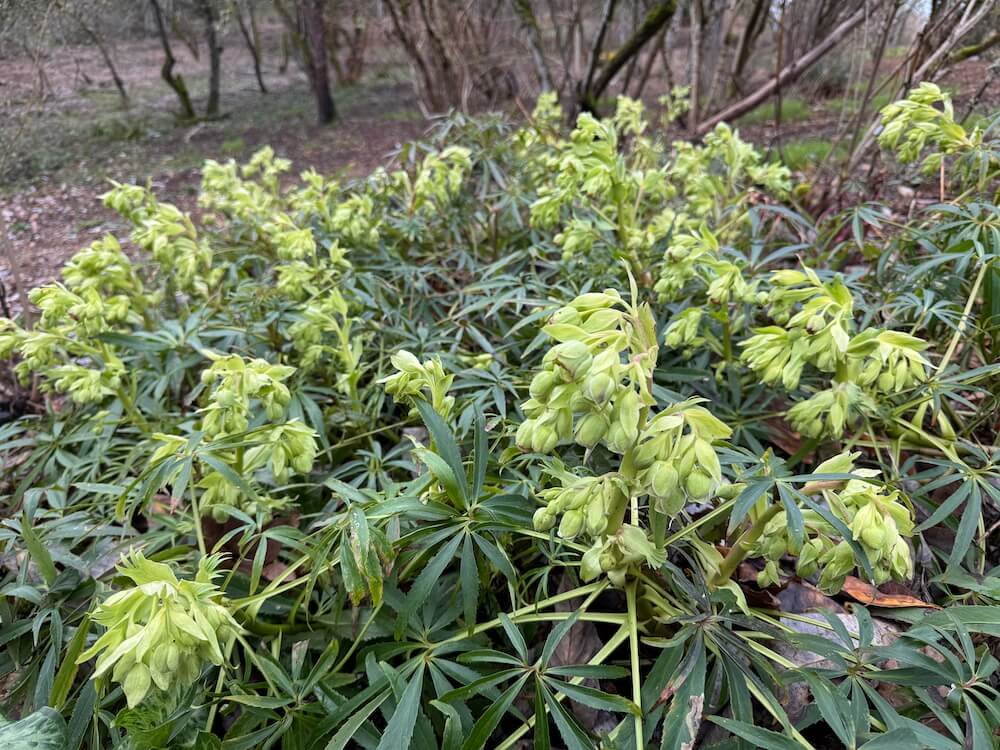 Image 2 of 5
Image 2 of 5

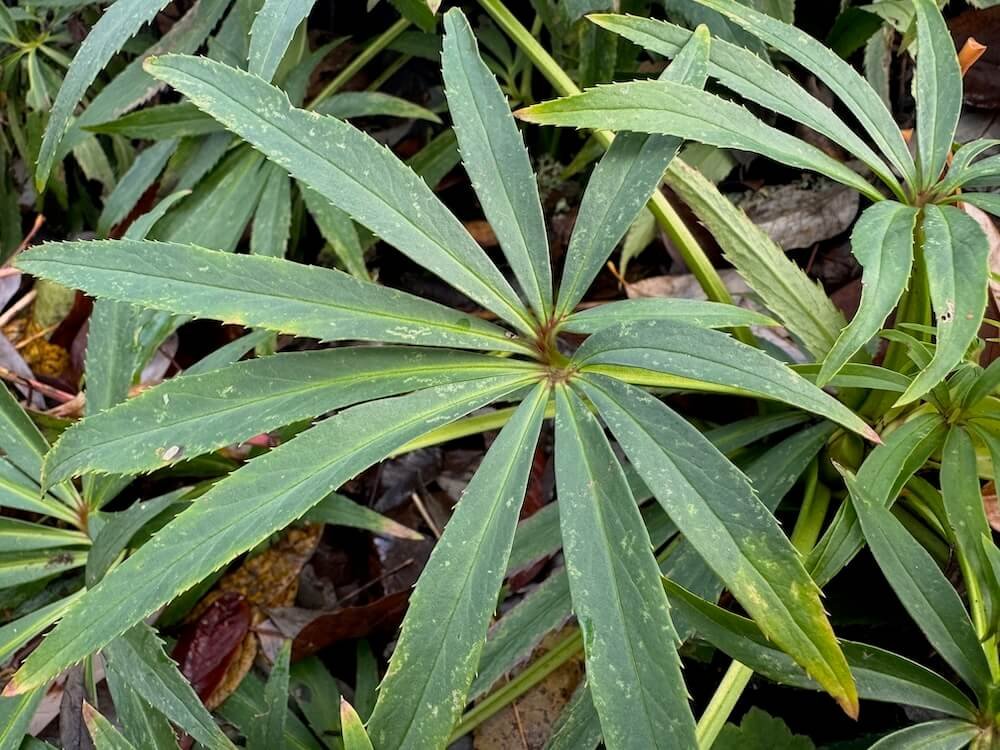 Image 3 of 5
Image 3 of 5

 Image 4 of 5
Image 4 of 5

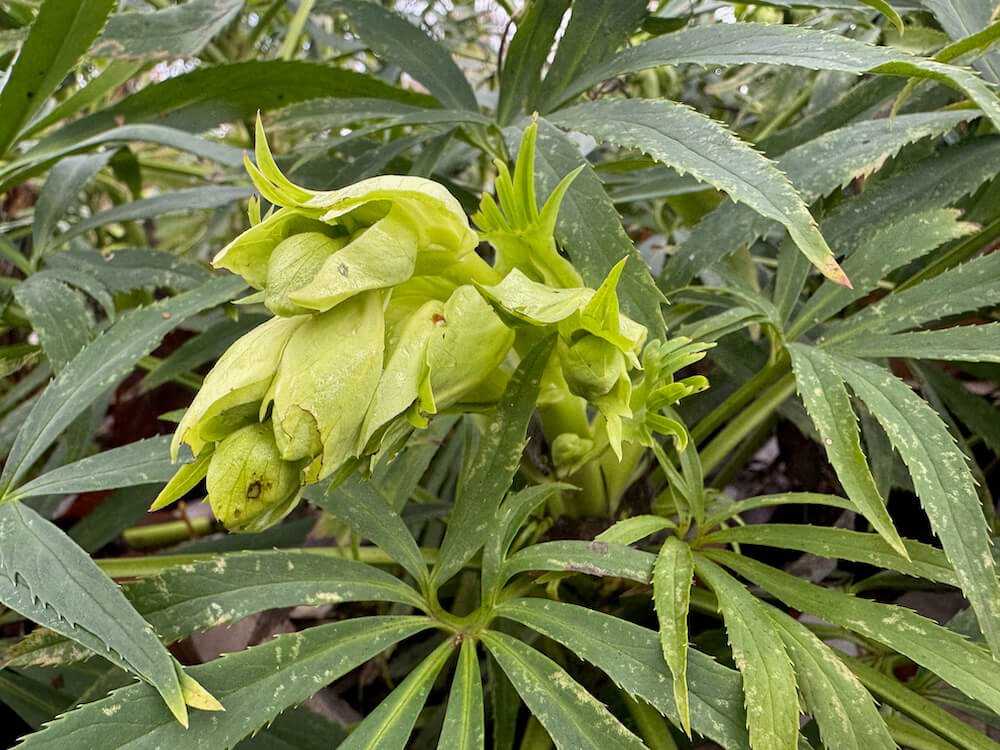 Image 5 of 5
Image 5 of 5






Helleborus foetidus 'Wester Flisk Group' | Wester Flisk Group Stinking Hellebore
DESCRIPTION
Helleborus foetidus 'Wester Flisk Group' is an evergreen perennial that blooms from midwinter to mid-spring. It produces nodding, pale green flowers, often edged with purple, arranged in large, open clusters. The plant's stems and leaf stalks may be flushed with deep purple-red hues, which suffuse into the leaf bases, providing a beautiful contrast to the narrow, dark green leaflets.
This cultivar originated in the early 1970’s at Wester Flisk on the Firth of Tay in Scotland, discovered by Mrs. Mamie Walker in her rectory garden. 'Wester Flisk Group' is valued for its architectural presence and is known to attract bees. Additionally, it exhibits some resistance to deer and rabbits, making it a resilient choice for various garden settings.
DESCRIPTION
Helleborus foetidus 'Wester Flisk Group' is an evergreen perennial that blooms from midwinter to mid-spring. It produces nodding, pale green flowers, often edged with purple, arranged in large, open clusters. The plant's stems and leaf stalks may be flushed with deep purple-red hues, which suffuse into the leaf bases, providing a beautiful contrast to the narrow, dark green leaflets.
This cultivar originated in the early 1970’s at Wester Flisk on the Firth of Tay in Scotland, discovered by Mrs. Mamie Walker in her rectory garden. 'Wester Flisk Group' is valued for its architectural presence and is known to attract bees. Additionally, it exhibits some resistance to deer and rabbits, making it a resilient choice for various garden settings.
DESCRIPTION
Helleborus foetidus 'Wester Flisk Group' is an evergreen perennial that blooms from midwinter to mid-spring. It produces nodding, pale green flowers, often edged with purple, arranged in large, open clusters. The plant's stems and leaf stalks may be flushed with deep purple-red hues, which suffuse into the leaf bases, providing a beautiful contrast to the narrow, dark green leaflets.
This cultivar originated in the early 1970’s at Wester Flisk on the Firth of Tay in Scotland, discovered by Mrs. Mamie Walker in her rectory garden. 'Wester Flisk Group' is valued for its architectural presence and is known to attract bees. Additionally, it exhibits some resistance to deer and rabbits, making it a resilient choice for various garden settings.
-
Family: Ranunculaceae
Height: Up to 24 inches
Width: Up to 36 inches
Foliage color: Dark green with a reddish tint
Flower color: Greenish-white with red edges
Bloom time: Late winter to early spring
Light requirements: Partial shade
Water requirements: Moderate; prefers moist, well-drained soil
Maintenance: Low; remove old foliage in late winter
Growing zone: USDA zones 5 to 9
Wildlife attractors: Attracts beesThis plant can be seen in the perennial border at the Bellevue Botanical Garden.

